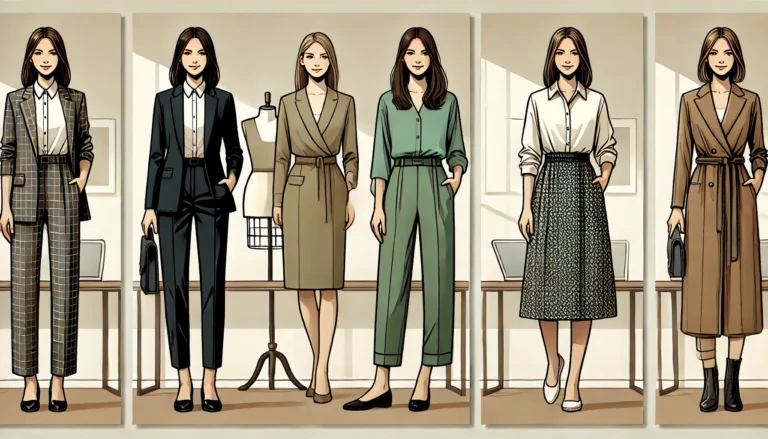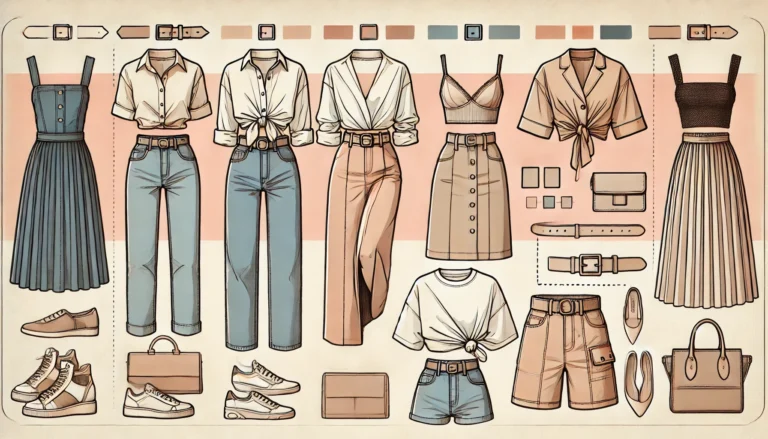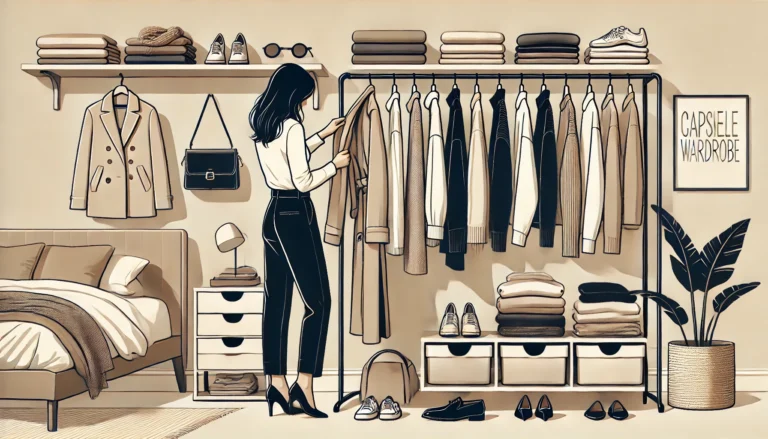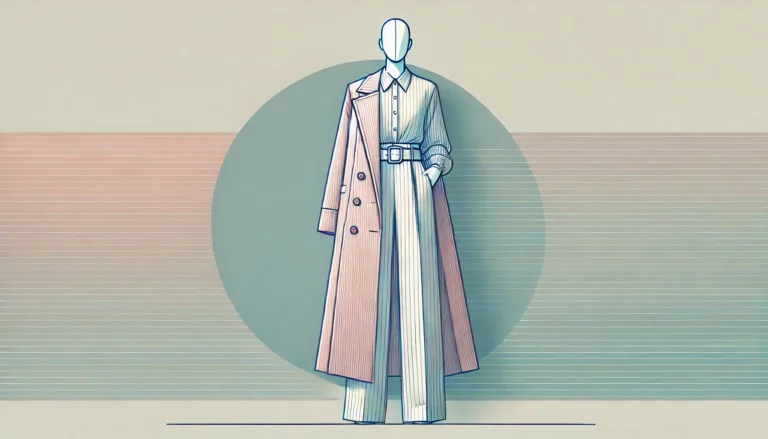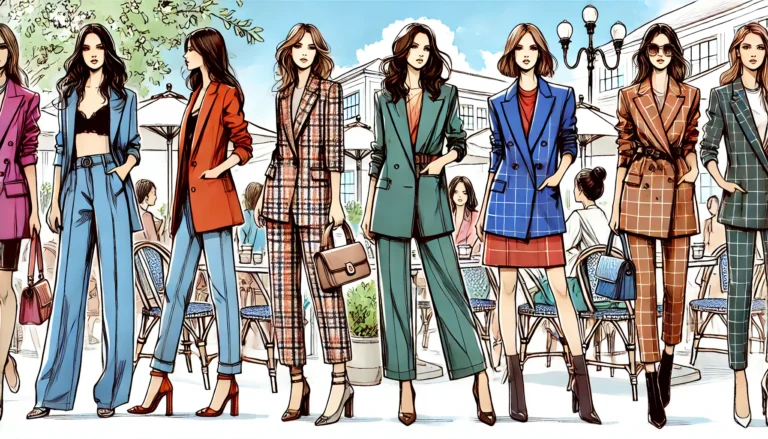Eco-Friendly Fashion: Sustainable Style for Minimalists
The Pain of Fast Fashion and Environmental Impact
Fast fashion has become a global phenomenon, enticing consumers with its affordability and rapid turnover of styles. However, the environmental impact of this industry is alarming. Each year, millions of tons of clothing are discarded, contributing to pollution and excessive waste. The toxic chemicals used in dyeing processes and the enormous amount of water required for production further exacerbate the environmental toll. For the eco-conscious minimalist, this cycle of consumption and disposal is not only unsustainable but also misaligned with their values.
For those who embrace a minimalist lifestyle, the goal is to curate a wardrobe that reflects both personal style and ethical responsibility. Minimalists seek quality over quantity, preferring timeless pieces that are versatile and durable. They value brands and designers who prioritize sustainability and ethical manufacturing practices. The challenge lies in finding fashion options that meet these criteria without compromising on style or breaking the bank.
Fortunately, the fashion industry is evolving. A growing number of brands are committed to sustainability, offering collections that cater to the modern minimalist. This article explores current sustainable fashion trends that align with minimalist principles. From capsule wardrobes to innovative fabrics, discover how you can maintain a stylish, eco-friendly wardrobe that stands the test of time.
Embracing the Capsule Wardrobe
The concept of a capsule wardrobe is a cornerstone of minimalist fashion. It involves curating a collection of essential, interchangeable pieces that can be worn in a variety of ways. Typically, a capsule wardrobe consists of 30 to 40 items, including clothing, shoes, and accessories. The goal is to simplify your wardrobe while maximizing outfit possibilities.
A sustainable capsule wardrobe focuses on quality over quantity. Choose pieces made from eco-friendly materials like organic cotton, linen, or recycled fabrics. Invest in versatile basics such as a classic white shirt, a tailored blazer, and a pair of well-fitting jeans. By selecting neutral colors and timeless silhouettes, you can create a cohesive wardrobe that transcends seasonal trends.
Prioritizing Quality and Longevity
When building a sustainable wardrobe, prioritizing quality is crucial. Well-made garments not only last longer but also retain their shape and appearance over time. Look for brands that emphasize craftsmanship and use durable materials. Consider pieces with reinforced seams, high-quality zippers, and buttons that are securely attached.
In doing so, you’ll find that your wardrobe becomes more reliable, with each piece serving as a long-term investment. This approach not only reduces the frequency of purchases but also minimizes waste, as fewer garments end up in landfills. By choosing quality over fleeting trends, you contribute to a more sustainable fashion ecosystem.
Exploring Innovative and Sustainable Fabrics
Advancements in textile technology have introduced a range of sustainable fabrics to the fashion industry. These materials are designed to reduce environmental impact and promote ethical production practices. One notable example is Tencel, a fabric made from sustainably sourced wood pulp. It’s known for its softness, breathability, and biodegradability.
Another innovative material is Piñatex, derived from pineapple leaf fibers. It serves as a sustainable alternative to leather, offering a similar texture and durability without the environmental cost. Organic hemp and bamboo are also gaining popularity due to their minimal water requirements and rapid growth cycles. By exploring these innovative textiles, minimalists can enjoy a diverse range of eco-friendly options.
Supporting Ethical and Transparent Brands
Transparency in the fashion industry is becoming increasingly important to consumers. Minimalists, in particular, value brands that are open about their production processes and labor practices. Supporting ethical brands means choosing companies that prioritize fair wages, safe working conditions, and environmentally responsible manufacturing.
Researching a brand’s supply chain and ethical certifications can provide insight into their commitment to sustainability. Look for certifications like Fair Trade, GOTS (Global Organic Textile Standard), and B Corp, which indicate a brand’s dedication to ethical practices. By supporting these companies, you’re casting a vote for a more sustainable fashion industry.
Adopting a “Less is More” Philosophy
The minimalist mantra of “less is more” is particularly relevant in the realm of sustainable fashion. By focusing on fewer, high-quality items, you can reduce clutter and make thoughtful choices that align with your values. This approach encourages a more mindful consumption pattern, where each purchase is deliberate and meaningful.
Consider organizing regular wardrobe audits to assess your clothing needs and identify items that no longer serve you. Donate or sell pieces that are in good condition, and recycle those that are beyond repair. This practice not only helps maintain a tidy wardrobe but also contributes to a circular fashion economy, where garments are kept in use for as long as possible.
Engaging in Conscious Consumerism
Conscious consumerism is about making informed choices that reflect your values and the impact you want to have on the world. As a modern minimalist, this means being intentional about your fashion purchases. Before buying new items, consider their origin, the materials used, and the brand’s ethical stance.
Engage with brands on social media to ask questions about their sustainability practices. Support local and independent designers who prioritize ethical production. By actively participating in the conversation around sustainable fashion, you can influence positive change and encourage the industry to adopt more responsible practices.
The Future of Sustainable Fashion
The future of sustainable fashion lies in innovation, collaboration, and consumer demand. As more individuals embrace minimalist values, the call for eco-friendly and ethically produced garments will continue to grow. This shift presents an opportunity for the industry to reinvent itself, prioritizing sustainability at every stage of the production process.
The integration of technology, such as 3D printing and digital design, is set to revolutionize the way we create and consume fashion. These advancements offer the potential to reduce waste, minimize resource consumption, and create garments that are tailored to individual needs. By staying informed and engaged, modern minimalists can play a pivotal role in shaping a more sustainable future for fashion.
Ultimately, sustainable fashion for the modern minimalist is about aligning style with values. By embracing trends that prioritize environmental and ethical considerations, you can cultivate a wardrobe that reflects your commitment to a more sustainable world. Each choice you make, from selecting quality garments to supporting ethical brands, contributes to a collective effort towards a greener and more responsible fashion industry.
